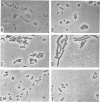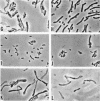Abstract
Removal of aflatoxin B1 from liquid cultures by resting and growing cells of Flavobacterium aurantiacum NRRL B-184 was studied. Spectrophotometic and thin-layer techniques served as aflatoxin assays. Cells grown in the presence of 5 ppm or higher levels of aflatoxin developed aberrant morphological forms. These toxin concentrations partially inhibited growth, and the nature of the inhibition suggested that aflatoxin interfered with cell wall synthesis. Incubation of 1.0 × 1011 resting cells per milliliter with 7.0 μg/ml of aflatoxin B1 during a 4-hr period facilitated complete toxin removal from a buffered aqueous medium. Autoclaved cells and cell wall preparations could remove a fraction of the aflatoxin of a test system. However, the toxin removed by autoclaved cells and cell walls could be extracted by washing with water but the aflatoxin B1 removed by intact cells could not be extracted into the liquid phase. The uptake of aflatoxin B1 by resting cells was sensitive to temperature and pH. Ruptured preparations of F. aurantiacum were not able to remove or modify the aflatoxin in an aqueous solution.
Full text
PDF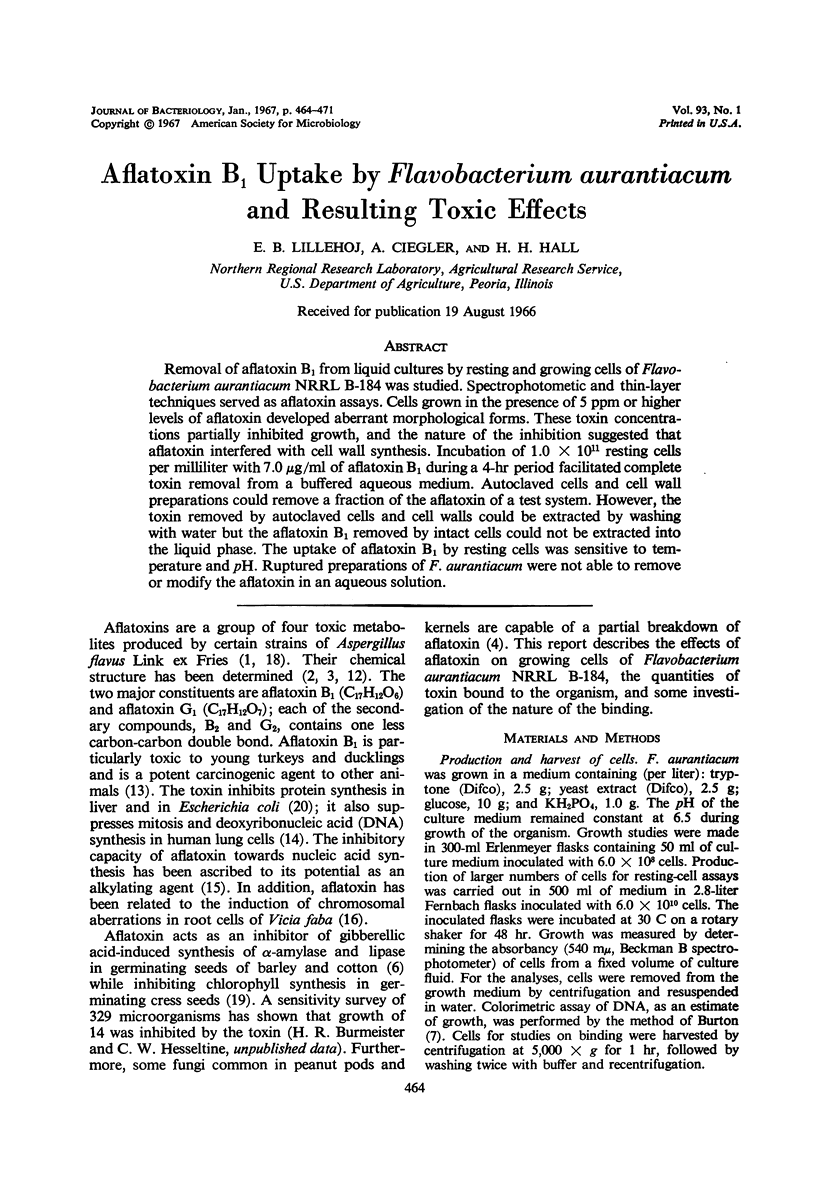
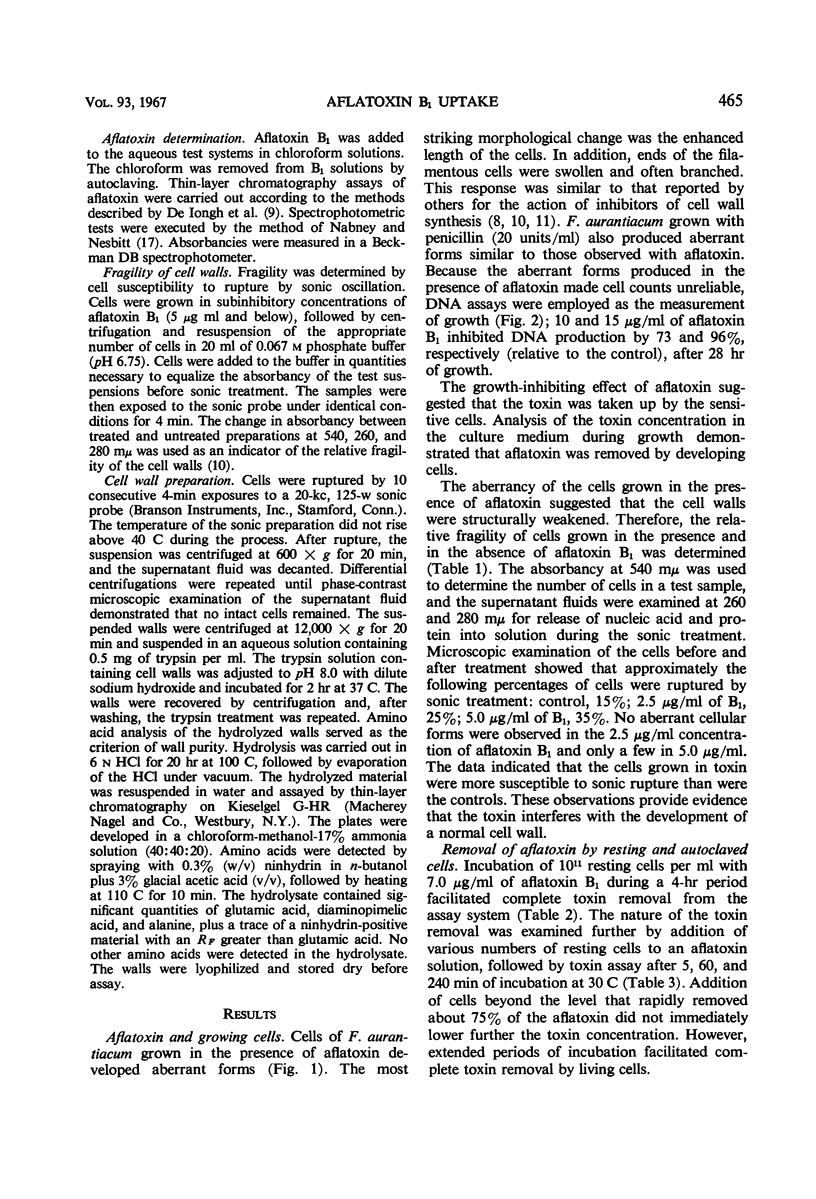
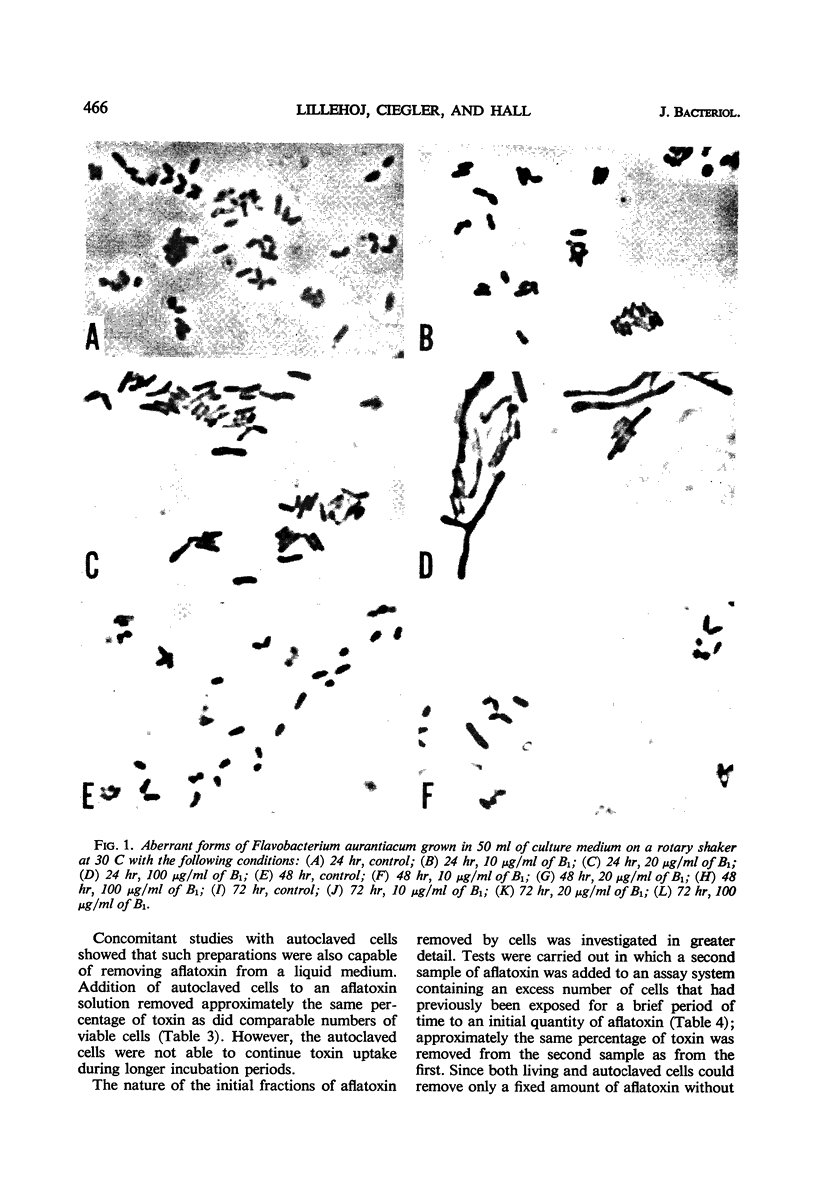

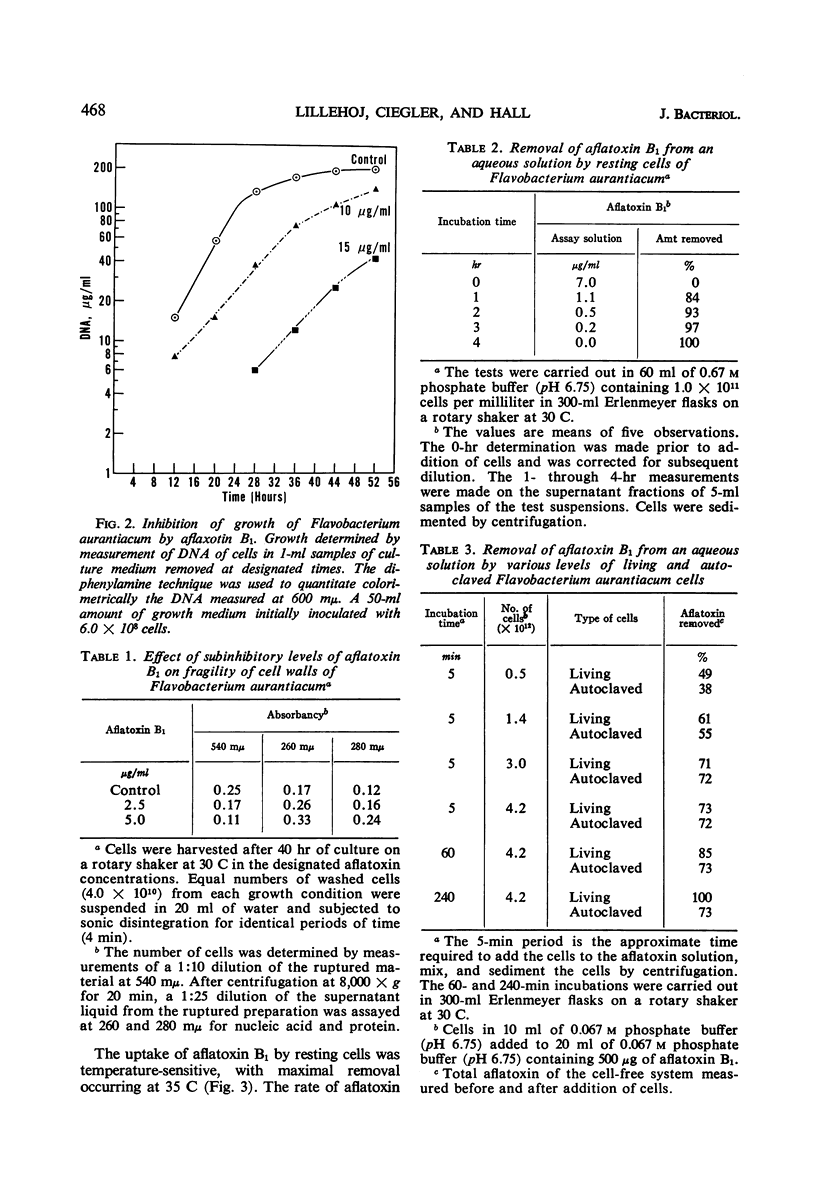
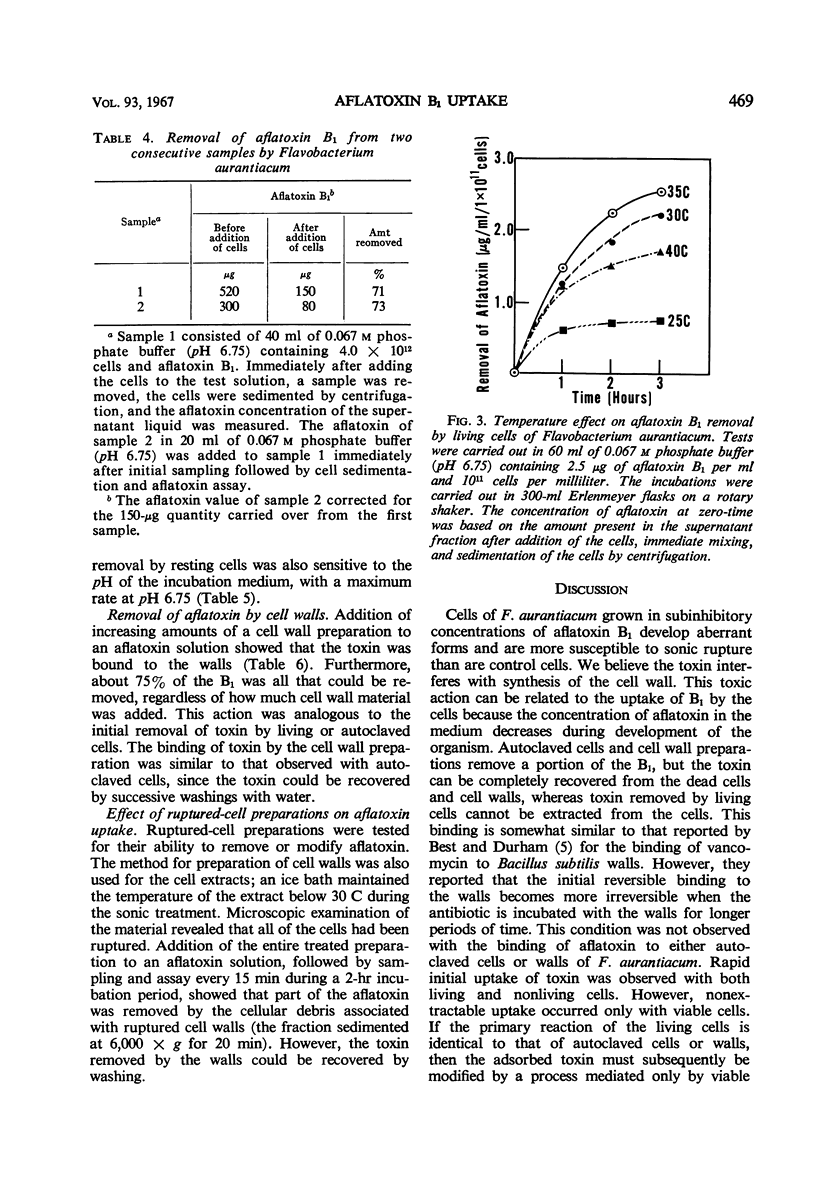
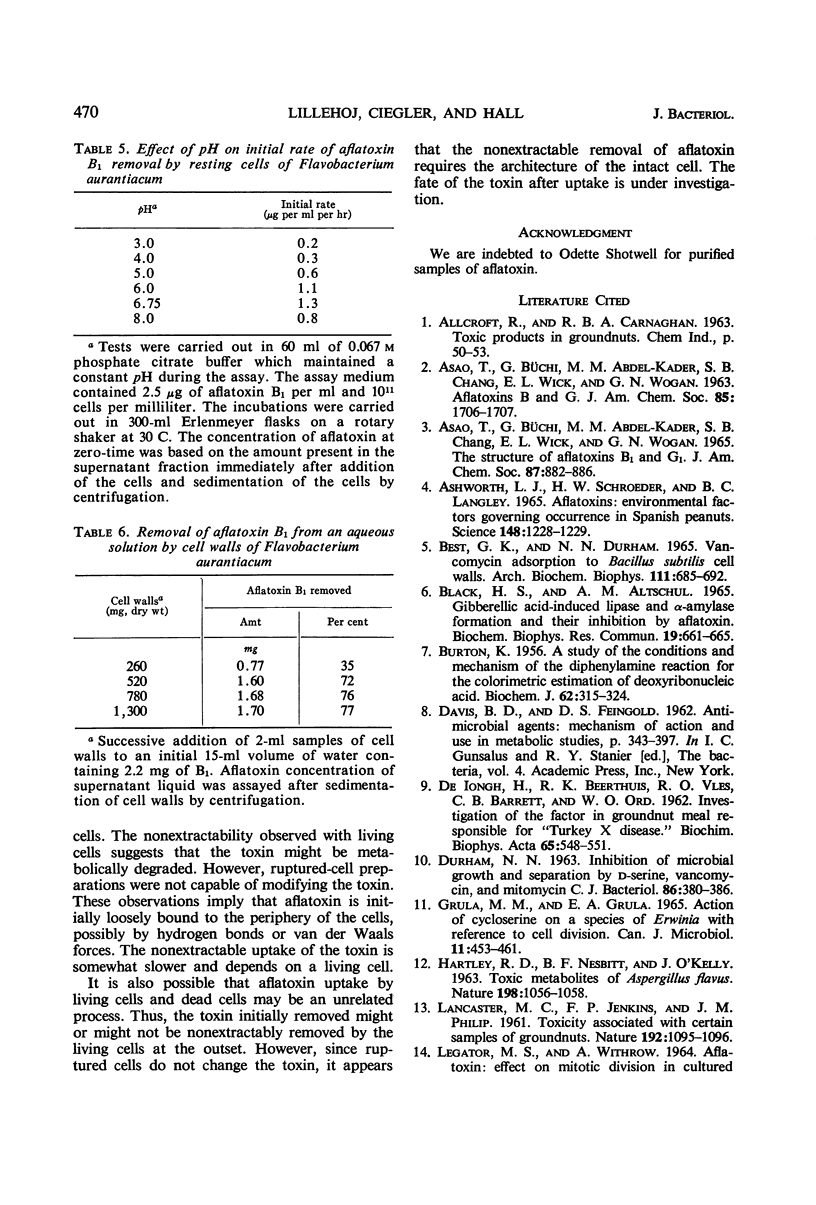

Images in this article
Selected References
These references are in PubMed. This may not be the complete list of references from this article.
- ASAO T., BUECHI G., ABDEL-KADER M. M., CHANG S. B., WICK E. L., WOGAN G. N. THE STRUCTURES OF AFLATOXINS B AND G. J Am Chem Soc. 1965 Feb 20;87:882–886. doi: 10.1021/ja01082a031. [DOI] [PubMed] [Google Scholar]
- Ashworth L. J., Jr, Schroeder H. W., Langley B. C. Aflatoxins: Environmental Factors Governing Occurrence in Spanish Peanuts. Science. 1965 May 28;148(3674):1228–1229. doi: 10.1126/science.148.3674.1228. [DOI] [PubMed] [Google Scholar]
- BURTON K. A study of the conditions and mechanism of the diphenylamine reaction for the colorimetric estimation of deoxyribonucleic acid. Biochem J. 1956 Feb;62(2):315–323. doi: 10.1042/bj0620315. [DOI] [PMC free article] [PubMed] [Google Scholar]
- Best G. K., Durham N. N. Vancomycin adsorption to Bacillus subtilis cell walls. Arch Biochem Biophys. 1965 Sep;111(3):685–691. doi: 10.1016/0003-9861(65)90250-x. [DOI] [PubMed] [Google Scholar]
- Black H. S., Altschul A. M. Gibberellic acid-induced lipase and alpha-amylase formation and their inhibition by aflatoxin. Biochem Biophys Res Commun. 1965 May 18;19(5):661–664. doi: 10.1016/0006-291x(65)90391-8. [DOI] [PubMed] [Google Scholar]
- DURHAM N. N. INHIBITION OF MICROBIAL GROWTH AND SEPARATION BY D-SERINE, VANCOMYCIN, AND MITOMYCIN C. J Bacteriol. 1963 Sep;86:380–386. doi: 10.1128/jb.86.3.380-386.1963. [DOI] [PMC free article] [PubMed] [Google Scholar]
- GRULA M. M., GRULA E. A. ACTION OF CYCLOSERINE ON A SPECIES OF ERWINIA WITH REFERENCE TO CELL DIVISION. Can J Microbiol. 1965 Jun;11:453–461. doi: 10.1139/m65-060. [DOI] [PubMed] [Google Scholar]
- Legator M. S., Zuffante S. M., Harp A. R. Aflatoxin: effect on cultured heteroploid human embryonic lung cells. Nature. 1965 Oct 23;208(5008):345–347. doi: 10.1038/208345a0. [DOI] [PubMed] [Google Scholar]
- Lilly L. J. Induction of chromosome aberrations by aflatoxin. Nature. 1965 Jul 24;207(995):433–434. doi: 10.1038/207433a0. [DOI] [PubMed] [Google Scholar]
- SCHOENTAL R., WHITE A. F. AFLATOXINS AND "ALBINISM" IN PLANTS. Nature. 1965 Jan 2;205:57–58. doi: 10.1038/205057a0. [DOI] [PubMed] [Google Scholar]
- de IONGH, BEERTHUIS R. K., VLES R. O., BARRETT C. B., ORD W. O. Investigation of the factor in groundnut meal responsible for "turkey X disease". Biochim Biophys Acta. 1962 Dec 17;65:548–551. [PubMed] [Google Scholar]



